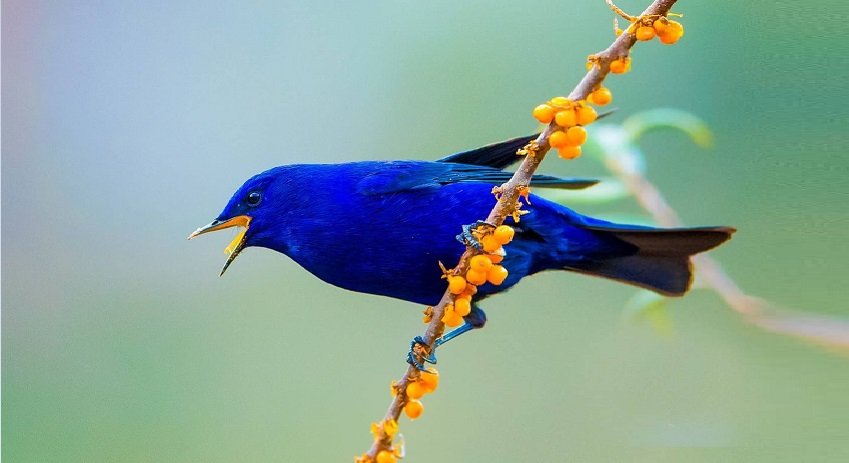Meet Grandala Coelicolor: an enchanting dark blue bird that you can spot anywhere
Living in large flocks, often in high mountain passes, alpine forests, and mid to high-altitude meadows is a spellbinding thrush you will not find anywhere else.

Living in the mid to low altitudes of the Indian Subcontinent, all the way through into Tibet, and parts of China, is an eye-searing member of the thrush species that is like no other.
Meet the spell binding Grandala coelicolor.

The grandala (Grandala coelicolor) adult male of this bird species is rich deep spellbinding blue color all over his body, except for his wings which are dark black. This blue color is so intense it is almost eye-searing.

Photo Courtesy of https://commons.wikimedia.org/wiki/User:Solundir – CC BY-SA 3.0
Females of the species are a brown color with white streaks about the head and breast, with white bars on each wing. While immature birds tend to look similar to the females.
Both males and females are long-billed and can be found in large flocks similar in size to their thrush relatives.

Photo Courtesy of https://commons.wikimedia.org/wiki/User:Solundir – CC BY-SA 3.0
Living in the mid-to-low altitudes, this bird is found living primarily in the Himalayas in Bhutan, India, Nepal, as well as Tibet, and parts of China.

Photo Courtesy of Matheus Hobold Sovernigo – CC BY-SA 4.0
Breeding occurs from May through to July when the birds build a cup-shaped nest on a ledge.

Screenshot Courtesy of Youtube/CANÁRIOS BELGA & COLEIRO
Though these birds may be members of the thrush family, they don’t really behave like one. Being insectivorous they do hunt insects, but rather than hunt them on the ground as a thrush would, they prefer to catch them on the wing. They also like to eat fruits and berries.

The exact numbers of the Grandala coelicolor are not known. However, it is thought as at the time of writing this article, their population is not under any threat.
